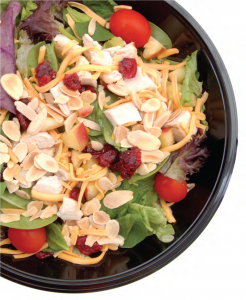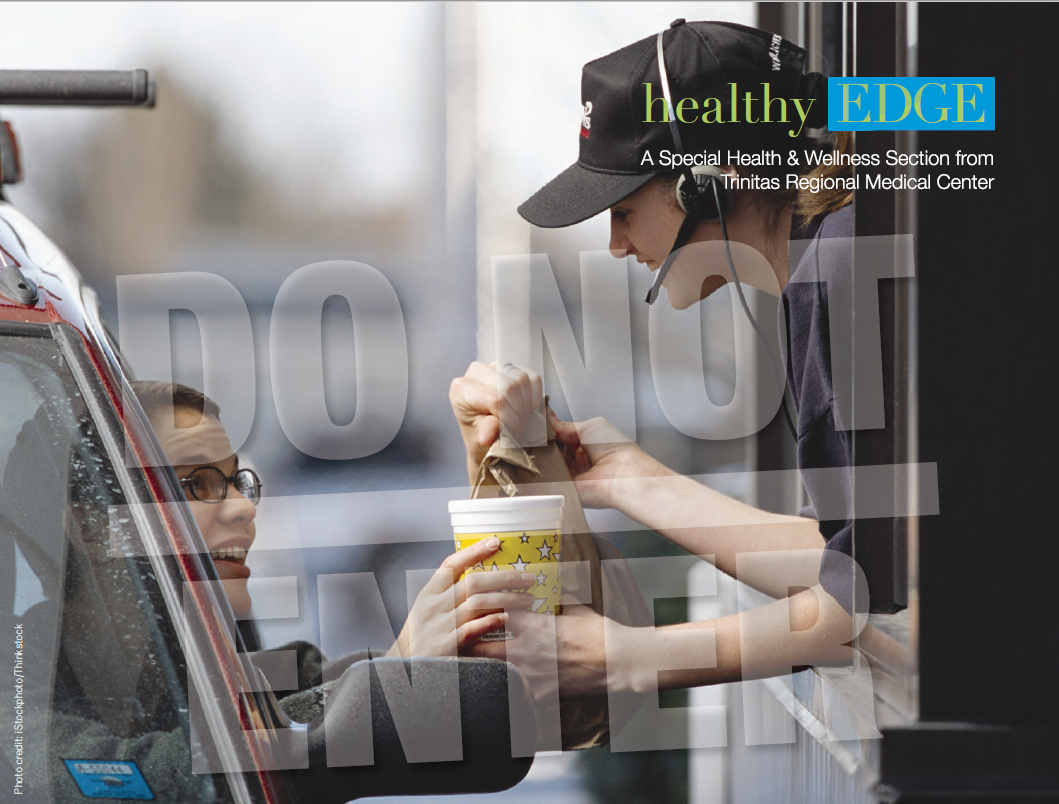The fast-food Drive-Thru has transformed our lives. Well, that’s one way of looking at it.
Fast food giant Taco Bell recently became embroiled in a high-profile lawsuit, during which it was compelled to respond to allegations that its “beef filling”
contained— what’s the delicate way of putting this? —twice as much “filling” as “beef.” The media seized on this story, as did the late-night comics. Unfortunately, everyone missed the point: The crime is what’s in fast food, not what isn’t. “Fast food poses a huge threat to the American public’s health, along with smoking and substance abuse,” says Ari Eckman, MD, chief of the Division of Endocrinology, Diabetes & Metabolism and director of The Diabetes Management Center at Trinitas Regional Medical Center. “Fast food meals are high in fat, sugar, salt, starch and calories, and very low in fiber and nutrients.” Indeed, the convenience of grab-and-go meals is far outweighed by the dangers that await us after we make that final hard left to the pickup window. Study after study is showing that reliance on heavily processed foods could be costing us our health. In a 2005 report published in The Lancet, healthy young adults who consumed fast food more than twice each week gained 10 more pounds and had twice as great an increase in insulin resistance—a precursor to type-2 diabetes—as their healthier eating counterparts. Fast foods are rich in trans fats, those manmade fats that have been shown to wreak havoc on the human heart. “Trans fats are terrible for one’s cholesterol,” Dr. Eckman says. “It’s dangerous to eat these foods if you have high blood pressure
e or high cholesterol.” Fast food isn’t just a nutritional nightmare. With the constant push to supersize, fast food portions are warping our sense of when to say when. “People are not at all in touch with the reality of how much they’re eating,” Dr. Eckman says. “The portion sizes are encouraging people to eat more. Burgers 50 years ago were only one ounce, and now they’re six ounces. You buy a 64-ounce soda, which is a half-gallon— and contains 48 teaspoons of sugar.” As a result, Dr. Eckman maintains, our society is becoming supersized. “Over 60 percent of our population is overweight, and 30 percent is obese,” he says. “And the children’s statistics are even more mind-boggling—nine million American kids were considered obese, a rate that has nearly doubled in the last 20 years. It’s getting out of control at an epidemic rate.” Fortunately, there are measures you can take to fight back—even if you have to eat fast:
overweight, and 30 percent is obese,” he says. “And the children’s statistics are even more mind-boggling—nine million American kids were considered obese, a rate that has nearly doubled in the last 20 years. It’s getting out of control at an epidemic rate.” Fortunately, there are measures you can take to fight back—even if you have to eat fast:
- Check the labels. Most fast-food restaurants offer nutritional information on their websites or on pamphlets, which enables you to make a more informed decision about what you order. “Try to stay away from the foods that are highest in cholesterol, saturated fats, sugar and salt,” Dr. Eckman says. “Choose low-fat options, if they’re available.” Keep in mind that that healthy salad may come with a not so – healthy dressing, so resist the temptation to squeeze the entire packet onto your greens.
- Cut down on your portions. Avoid the push to supersize your meal—those value menus may be a better deal
 financially, but could cost you your health. “To help spread out the calories, consider eating half of it and giving the other half to your partner or taking it home for another meal,” Dr. Eckman advises.
financially, but could cost you your health. “To help spread out the calories, consider eating half of it and giving the other half to your partner or taking it home for another meal,” Dr. Eckman advises. - Turn your kids into educated eaters. The fast-food commercials—and those little plastic toys—may entice your kids into clamoring for a drive-thru run, but you can fight back. “Making a healthy dinner at home can be a fun activity you do with your kids, that can help encourage them to eat healthier,” Dr. Eckman suggests. “You can also talk with your kids about the problem of obesity and some of its long-term effects on health, so they can become educated and make healthier choices on their own.”
- Moderation. Dr. Eckman suggests limiting fast food to only one meal per week, at the most. “Enjoy it once in a while, but this really shouldn’t be a weekly or biweekly event,” he says. “You don’t want to sacrifice your health for convenience.” EDGE
Editor’s Note: Lisa Milbrand is a New Jersey-based writer whose articles on health and relationships appear in Parents, Arthritis Today and Modern Bride. Her blog themamahood.com celebrates the life of a working mother.






